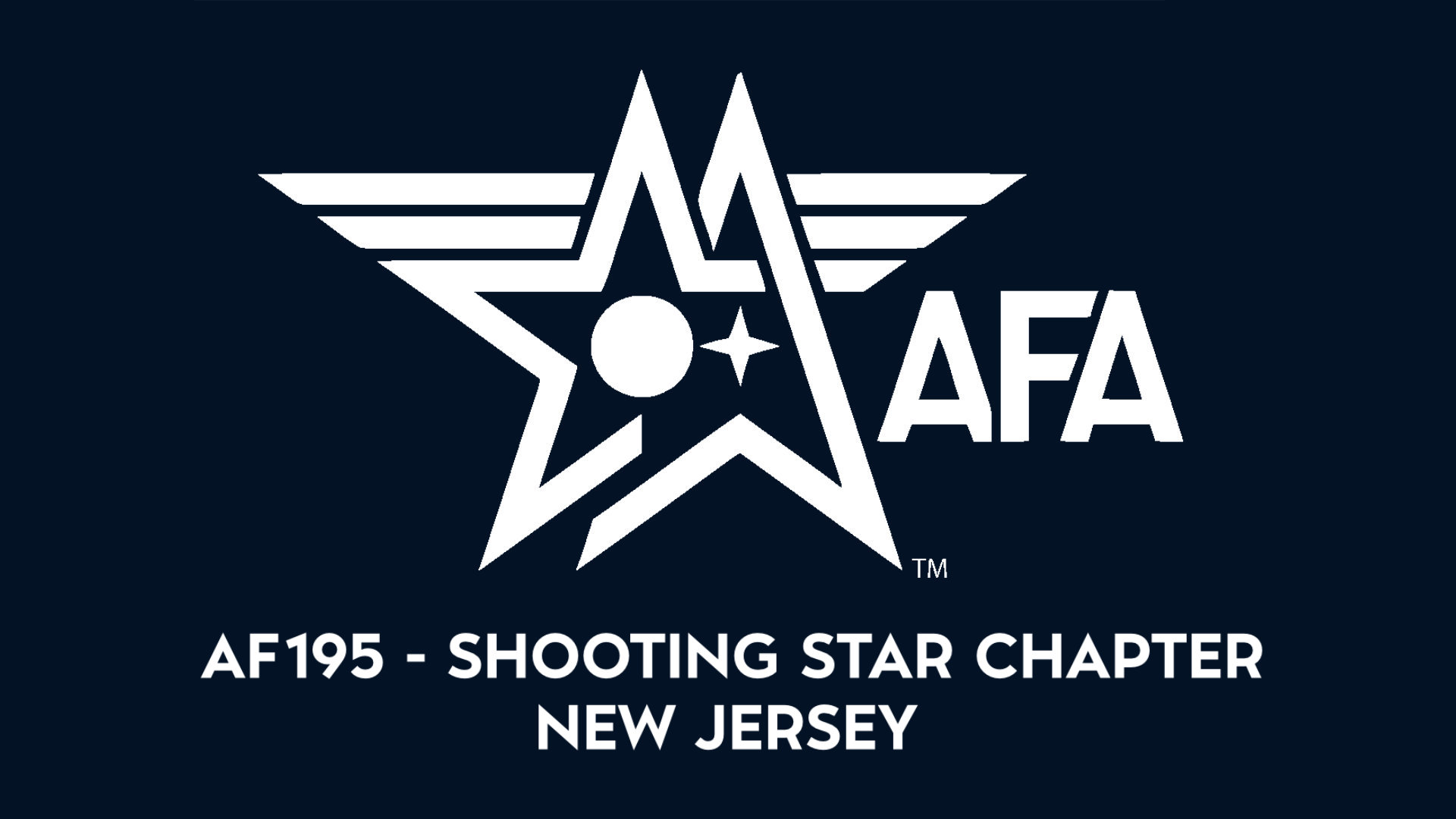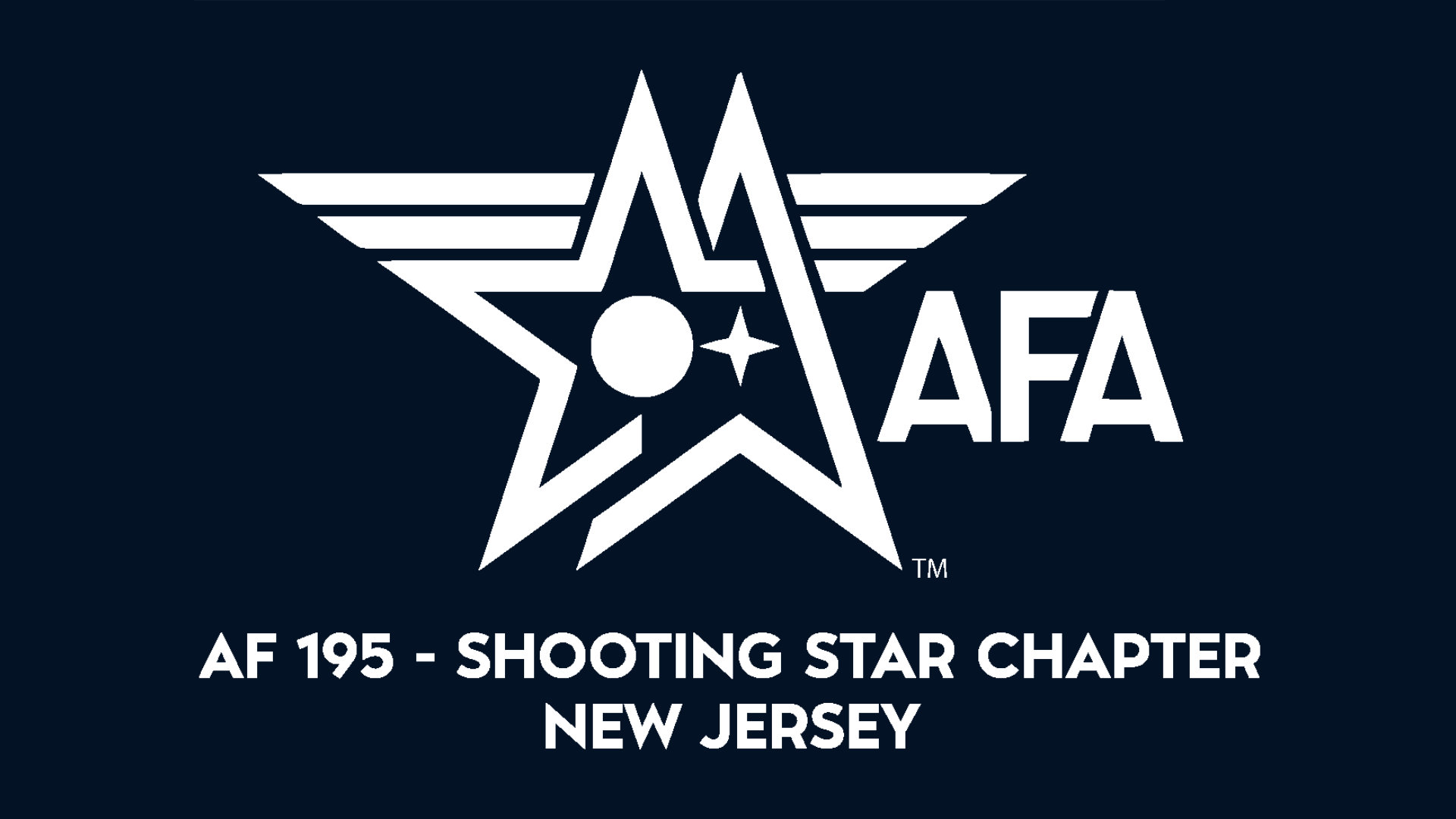AF195
The Shooting Star Chapter
The ‘Shooting Star’ name comes from a shooting star emblem (see below) placed on a WWI SPAD fighter used by former Chapter 195 member Capt Arthur Raymond Brooks, U.S. Army Air Service. According to Wikipedia, he was a World War I flying ace credited with shooting down six enemy aircraft while flying the SPAD XIII C.1. Capt Brooks is one of the pilots featured in the series Dogfights presented by The History Channel, Season 2, Episode 7 titled “The First Dogfighters” which credited him as one of a group of World War I fighter pilots who invented aerial dogfighting.
Born in Framingham, Massachusetts on November 1, 1895, Brooks graduated from the Massachusetts Institute of Technology (MIT) in 1917 with a Bachelor of Science degree in electrochemical engineering. In July of that year, he enlisted in the Aviation Section of the U.S. Army Signal Corps. His flight training was provided by the Royal Flying Corps’ School of Military Aeronautics in Toronto, Ontario, Canada. He was then sent for further flight training to Fort Worth, Texas where he flew with the 139th Squadron, 2nd Pursuit Group. In March 1918, Brooks left for France and completed pursuit training at the 3rd Aviation Instruction Center, American Expeditionary Force (AEF), at Issoudun. The 139th was placed at the Vaucouleurs Aerodrome, Toul sector, where the squadron was equipped with SPAD VII aircraft. Brooks was eventually made its flight commander. By early August, he was assigned as flight commander of the 22nd Aero Squadron, 2nd Pursuit Group. His new squadron was supplied with SPAD XIII pursuit craft. Altogether, he flew 120 missions in four different aircraft. He named each of the aircraft Smith in honor of his fiancée (Ruth Connery) who was attending Smith College in Massachusetts. The final plane he flew in combat, the Smith IV, is on display at the Smithsonian Institution’s National Air and Space Museum.
On July 29, 1918, Brooks achieved his first confirmed aerial victory by downing a German Fokker aircraft. Later, he destroyed two more Fokkers while flying over enemy lines on September 14. On that day, Brooks single-handedly engaged eight enemy aircraft in combat thus, earning him the Distinguished Service Cross. By the war’s end, he had six confirmed kills to his credit.
Following the armistice of November 11, 1918, Brooks remained in France as the 22nd Squadron’s commanding officer. His squadron was kept in reserve for possible German occupation duty. Upon his return to the United States in July 1919, Brooks was promoted to Captain. He decided to stay in the Air Service and was subsequently assigned as commanding officer for the 95th Pursuit Squadron, stationed at Kelly Field, Texas. From May 1920 to August 1921, he was put in charge of the 1st Pursuit Group at Ellington Field, Texas. Following that assignment, Brooks attended Air Service Field Officer’s School, Langley Field, Virginia. After graduation, he stayed on duty at Langley Field until his resignation from the U.S. Army Air Service in December 1922. During 1920-21, while in the service, he was involved in a failed Framingham-based commercial aviation business called the Brooks, Banks and Smith Corporation. Also in 1920, Brooks married Ruth. Their only child, Peter, was born in 1929.
Brooks’ first job after his honorable discharge from the Air Service was as secretary for the National Automobile Association during 1923-24. During 1924-25, he worked in advertising sales for the financial magazine, United States Investor. Once again, his desire to be engaged in commercial aviation compelled him to become involved in establishing and organizing the Florida Airways Corporation from late 1925 into 1926. In time, Florida Airways became Eastern Airways. Brooks left this financially struggling enterprise and joined the Department of Commerce’s Aeronautics Branch in August 1926. His main task with the Aeronautics Branch was to survey air routes and supervise the installation of beacons to assist air mail pilots navigate the Appalachian Mountains from Virginia to Pennsylvania.
He left government service in early 1928 and spent the next few decades working as a scientist, engineer and chief pilot for Bell Telephone Laboratories at Hadley Field, New Jersey. There, Brooks and his staff conducted pioneering research on ground-to-air radiotelephone communications and radio navigational aids. During much of this period, he piloted a Fairchild FC2-W Wasp and a Ford Tri-Motor that operated as flying laboratories for the team’s communications research. He was Bell’s publications manager for New Jersey operations at the time of his retirement in 1960.
Brooks stayed active in aviation for the remainder of his life. Even in his nineties, he enjoyed flying all sorts of aircraft, including ultralights, gliders and hot-air balloons. He belonged to many aviation-related and professional associations and organizations such as the American Legion, Military Order of the World Wars, Combat Pilots Association, Order of Daedalians, OX-5 Aviation Pioneers Association, Telephone Pioneers of America, Cross and Cockade, Associate Fellow of the American Institute for Aeronautics and Astronautics, Quiet Birdmen, WWI Overseas Flyers and the American Fighter Aces Association. Brooks also remained involved with the alumni affairs of his alma mater — MIT. He attended numerous air shows and reunions, including the sixty-fifth, and final reunion, held for the Lafayette Flying Corps in Paris, France in 1983. In 1980, he was inducted into the Aviation Hall of Fame of New Jersey. Brooks lived long enough to see his Smith IV restored by the National Air and Space Museum during the 1980s. Brooks, the last surviving American World War I ace, died in Summit, New Jersey, on July 17, 1991.
Some of the pictures on this page are taken from the National Air And Space Archives, Arthur Raymond Brooks Collection, by Mark Kahn, at the National Air and Space Museum, Smithsonian Institution.
AF 195 Officers

JOIN AFA
WE WELCOME NEW MEMBERS!
Military and non-military. You don’t need to be a vet to attend. All are welcome.
All AFA members receive an electronic subscription to Air Force Magazine and unlimited access to our digital content. In addition, AFA members have the exclusive opportunity to purchase a print subscription to Air Force Magazine.














